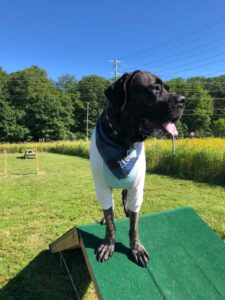Keep Your Dog Safe and Happy with These Top Tips
Introduction
Spring break is fast approaching, which means it’s time to start preparing for the season of outdoor activities. If you’re traveling with a dog on spring break, then you need to be extra vigilant about your four-legged friend’s safety. You may have heard that pets can’t get sunburned or hurt themselves while walking around in the sun. That’s not exactly true! Like us humans, dogs can get sunburned and overexpose themselves to UV rays—which can lead to eye damage and skin irritation. Plus, dogs tend to drink more water when they’re outside in warm weather than when they’re indoors; so if your pup is overheated from playing fetch or running around all day long, he could end up with some serious health issues later on down the road due to dehydration (including liver failure). So what can you do? Here are some tips for keeping your dog safe during spring break:
Spring break dog safety concerns
Spring break is a busy time for families, but it can also be stressful for our dogs. Many people will leave their pets at home while they go on vacation or travel with their families. This can be especially dangerous when you consider that spring break means more parties, more alcohol consumption and more animals getting loose from their yards or homes as people leave town.
If your dog does not get vaccinated against rabies and other common diseases this spring break season, he may become sick or injured if he gets into trouble while you are away. If your dog is unneutered or unsprayed then there’s an added risk of him attacking another animal–or even people–when left alone in the house during this busy time of year
Outdoor activities
- Check the temperature. Whether you’re at the beach or in the mountains, extreme heat can be dangerous for dogs. Be sure to keep your dog hydrated by offering water frequently and providing shade if necessary.
- Bring snacks. If you think about it, dogs are just like people: they get hungry when they’re active! Bring along some healthy treats from home so that both of you have something to munch on while hiking or playing in sandboxes (if there are any).
- Bring a portable dog bowl. If there aren’t any nearby water sources available for your pet, bring along a portable bowl for them so he/she won’t have to go without hydration during these exciting adventures together!
- Make sure your dog’s vaccinations are up-to-date before heading out on any long trips away from home–this will ensure both parties stay safe throughout whatever activities lie ahead!
Fleas and ticks
- Fleas and ticks are common in the spring. Your dog may have brought them home from a walk or they could have been hiding out in his fur all winter long.
- Check your dog for fleas and ticks by running a fine-toothed comb through his coat, looking at the base of each hair follicle for signs of insects. If you see fleas or ticks, remove them with tweezers immediately! Don’t squeeze them–this can increase the chance that they’ll bite your pet.
- If you live in an area where there are many pests like these around during warmer months (like Florida), it’s important to keep tabs on whether or not your furry friend has been exposed so that he doesn’t get sick from any diseases carried by these pests like Lyme disease or Rocky Mountain spotted fever (which is spread by both ticks).
Poisonous plants
There are a few poisonous plants to be aware of, and you should definitely avoid them if your dog is a chewer or explorer. These include:
- Oleander
- Sago Palm
- Lily of the Valley ( Convallaria majalis )
Dog clothes
Foxtails are a type of grass seed that can cause serious harm to dogs if they become embedded in their skin, ears, eyes, or nose. They have barbed bristles that can penetrate the skin and migrate deeper into the dog’s body, causing infections, abscesses, and even organ damage. One way to protect your dog from foxtails is to use dog clothes.
Dog clothes can provide a physical barrier between your dog’s fur and the foxtails, preventing them from becoming embedded in your dog’s skin. Clothes can also help to prevent foxtails from getting stuck in your dog’s ears, nose, or eyes. In particular, clothes that cover the belly, legs, and paws can be effective in preventing foxtails from entering these areas.
Be prepared to keep your dog safe this spring break.
Spring break is a time when many people take their dogs on outdoor adventures. It’s important to keep your dog safe and comfortable, especially if you’re going somewhere new. Here are some tips for keeping your pet happy and healthy during spring break:
- Make sure that all of your dog’s vaccinations are up-to-date before heading out on a trip. If you’re traveling far from home, make sure that the area where you’re staying has veterinarians who can administer any needed vaccines or treatments for common illnesses like fleas or ticks.
- Pack plenty of water in case there isn’t any available nearby (or bring along one of those collapsible bowls). Remember that it’s not just humans who need hydration–dogs do too! Just make sure not to go overboard with how much water they drink because this can lead them to become sick if they drink too fast or overfill their bellies with liquid which could cause bloat/gastric torsion (a condition where gas builds up inside the stomach causing pain). If this happens then seek immediate medical attention right away because without treatment it could lead to death within hours after symptoms start showing themselves.”
Conclusion
Spring break can be a fun time for you and your dog. With a little preparation, you can make sure that both of you have an enjoyable vacation.


